1 The Structure of Photons. Photons are electromagnetic oscillations tha travel at c, have energy E, wavelength 𝝀 and frequency 𝜐. They come in many variations. They are the basic building blocks of the universe.
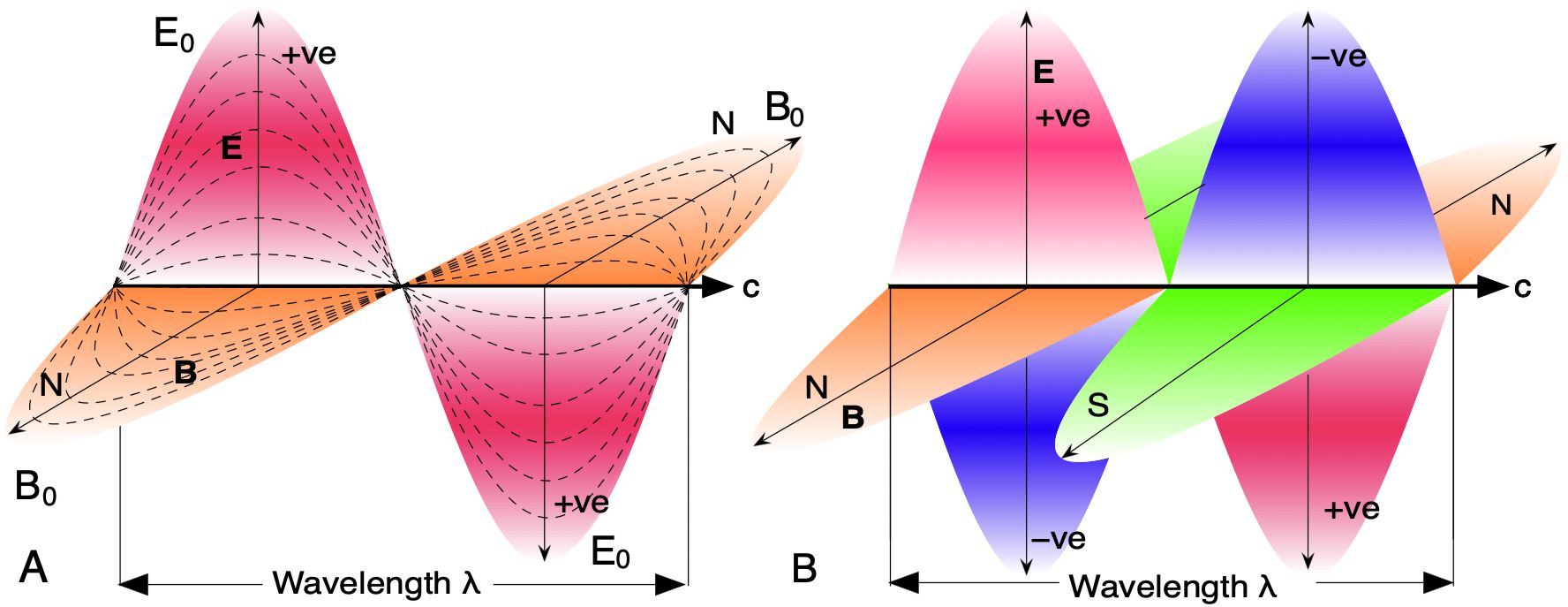
Schematic illustrations of a plane polarized photon. Red is positive, blue negative, electric fields; orange north, green south magnetic field poles.
2 From Photons to Particles. All stable particles, and their anti-particles, can be formed from photons. When anti-particles annihilate particles, they generate photons. All short lived "elementary" particles decay to stable particles and photons. Particle accelerators have never detected anything else. Photons making two revolutions per wavelength are the simplest possible structure for particles. Chapter 2 describes some of the properties all particles have when they are made from rotating photons. These include why E = mc2 and the special relativity corrections, including one that Einstein missed, as well as properties like spin, charge, magnetic moment, chirality, parity, and duality.
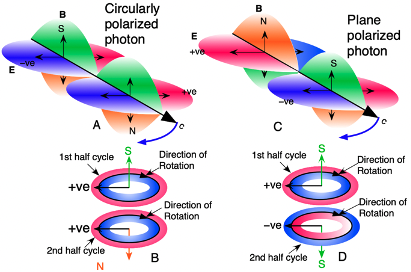
Rotating circularly polarized photons generate charged particles. They are more stable than linear photons. Rotating plane polarized photons generate neutral particles.

3 Real Particles Chapter 3 describes the properties that electrons, protons, neutrons, and neutrinos, the only stable particles, have under this model. It includes the electron neutrino's rest mass.

Schematic illustration of an electron. The rotating photon generates charge in at the circumference in its plane of rotation. The magnetic field perpendicular to it. Their diameter decreases by the relativistic correction factor as their speed increases.
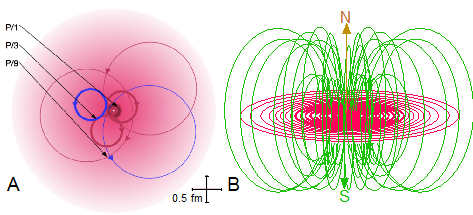
Representations of a proton. A shows the rotating photon subdivide into ⅓rd and ⅑th frequency harmonics. Electric charge originates at the circumference in its rotation plane. Note the two positive and one negative oscillations near the centre. B shows an isometric view of the proton with electric charge diminishing away from the centre and the magnetic field in the third dimension.
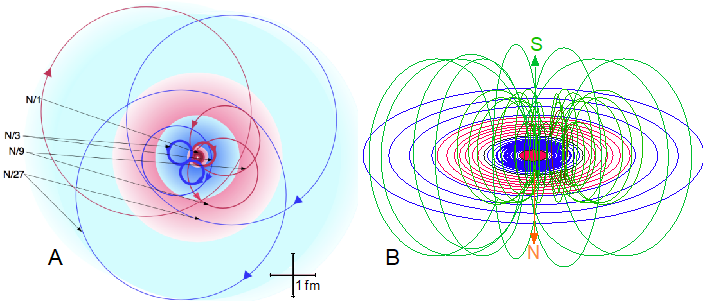
Representations of a neutron. It has a weak 1/27th negative frequency that spreads out to about 5 fm. They show it has a positive core surrounded by two negative and one positive oscillation, making it a neutral particle. Its outer reaches include a weak positive and very weak negative charge. Muons have the properties of 1/9th frequency harmonic oscillations. Pions have the properties of 1/9th and 1/27th harmonic oscillations.
5 Nuclear Binding and Structure. Chapter 5 shows how neutrons hold protons together into nuclei and how to determine the structure and some properties of any nucleus of any Z and A. It answers many questions that have puzzled nuclear physicists for decades as it shows just how simple the structures are.
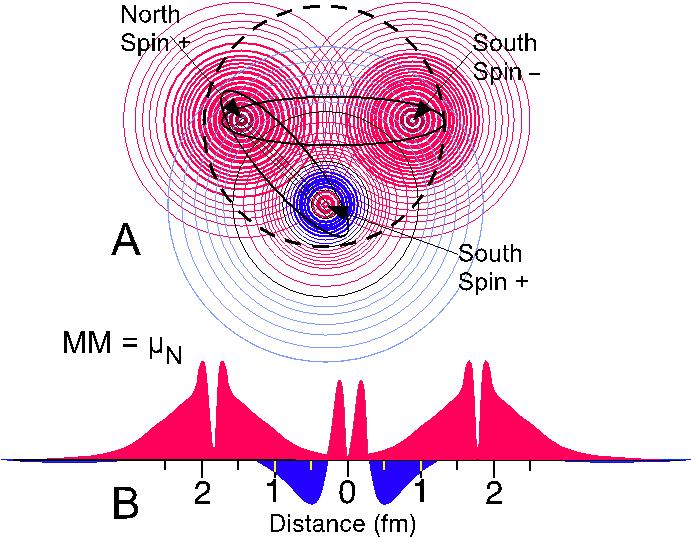
Schematic illustration of a neutron holding two protons in a 3He nucleus. Binding is a combination of the neutron’s negative segments overlapping the protons positive segments in the same plane, B. Their separation distance is effectively zero, giving a strong force. The nucleons orient their spins to give maximum magnetic binding, the ellipses in A.
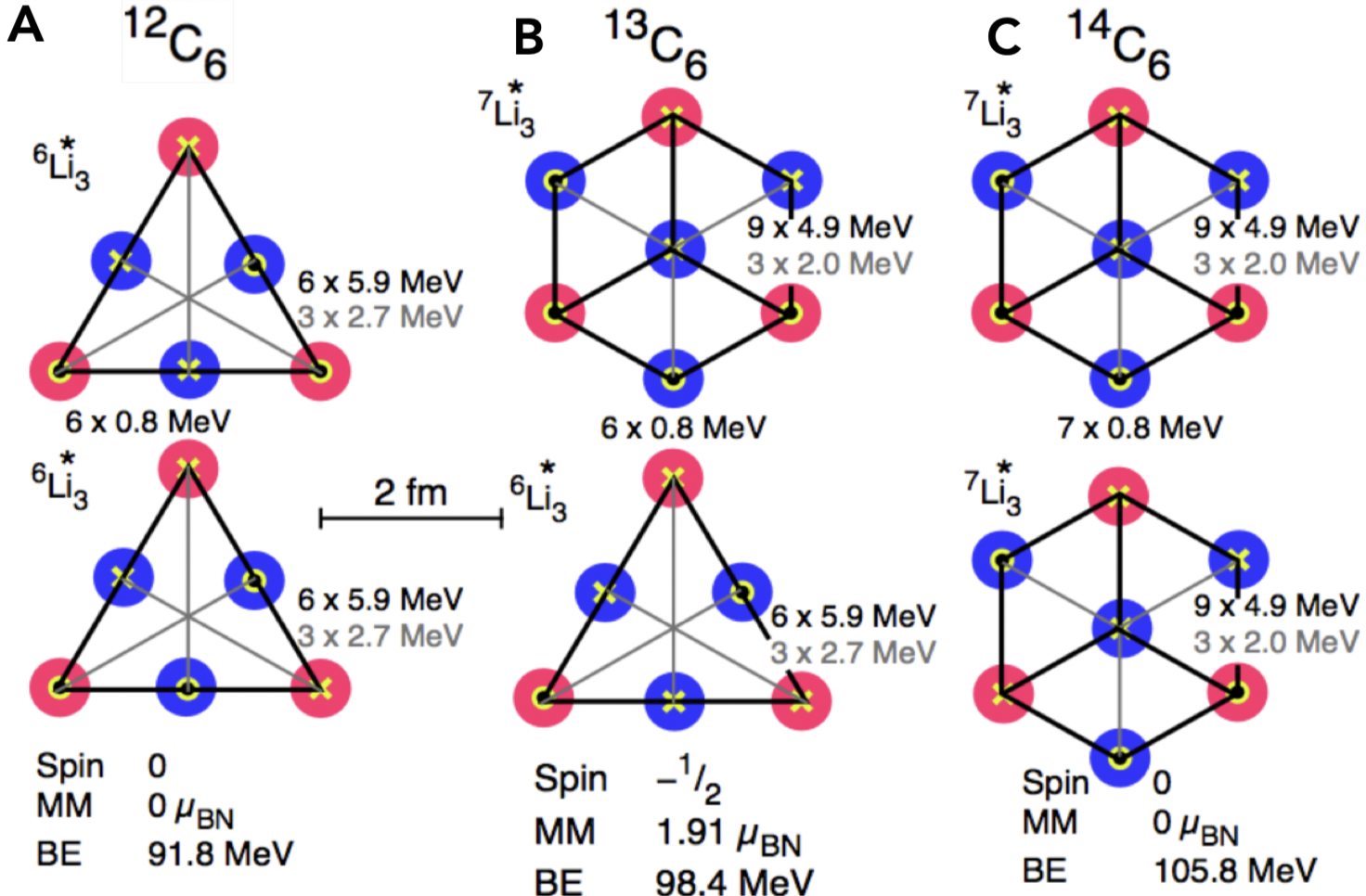
Schematic illustrations of the structures of the three carbon isotopes. They consist of two layers in which the protons form an equilateral triangle, with no positive charge in the middle. Experimental measurements show carbon nuclei are equilateral prism shaped and have less charge in their centre than the outside. The 14 C isotope structure shows a dominance of alpha particle structures, which are present almost everywhere in all but the lowest Z nuclei.
Chapter 6 Element Abundanceshows how protons fuse to produce the abundances of nuclei observed in the sun and other stars. It is essential reading for anyone who wants to work in nuclear fusion.
Chapter 7 Electrons in Atoms shows how electrons with fixed ionization energies are automatic consequences of classical physics. Introducing quantized orbits is an unnecessary complexity. Classical explanations are given for other propertiesThat generates all the known particles in the universe, complete with their mass. When mass gets large, gravity takes over. Knowing gravity, we can describe the universe’s large-scale structure.
8 Physical Explanations of Einstein's Gravity Chapter 8 describes the physics of Einstein's gravity and shows just how simple the topic really is. It also explains where the "experts" got both their mathematics and physics badly wrong for the simplest of reasons.
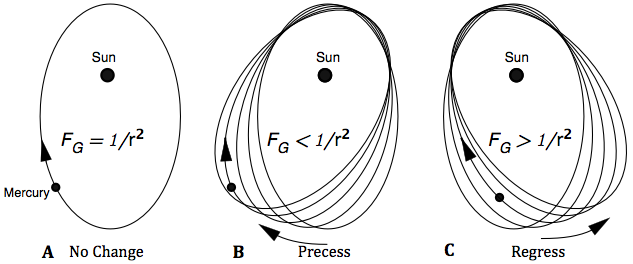
In 1687 Newton’s predicted that gravity must be less than inverse square for a planet’s orbit to precess in its orbital direction.Mercury’s anomalous orbital precession should have alerted general relativity practitioners that Einstein’s gravity was weaker than Newton’s inverse square. It is left to the "experts" to explain why they didn't pick that up.That error means standard cosmology models are wrong.
9 The Physical Origins of Gravity Chapter 9 describes the property of space that mass distorts to produce gravity. It includes the property that individual nucleons generate to distort space-time. The effect per nucleon is very weak, so gravity requires a lot of mass. The cumulative effect of all the nucleons gives one simple equation that predicts Newton's gravity as a first approximation, Einstein's gravity as a second approximation and the solution that gives the torus shape detected by the Event Horizon Telescope collaboration, as the exact solution.
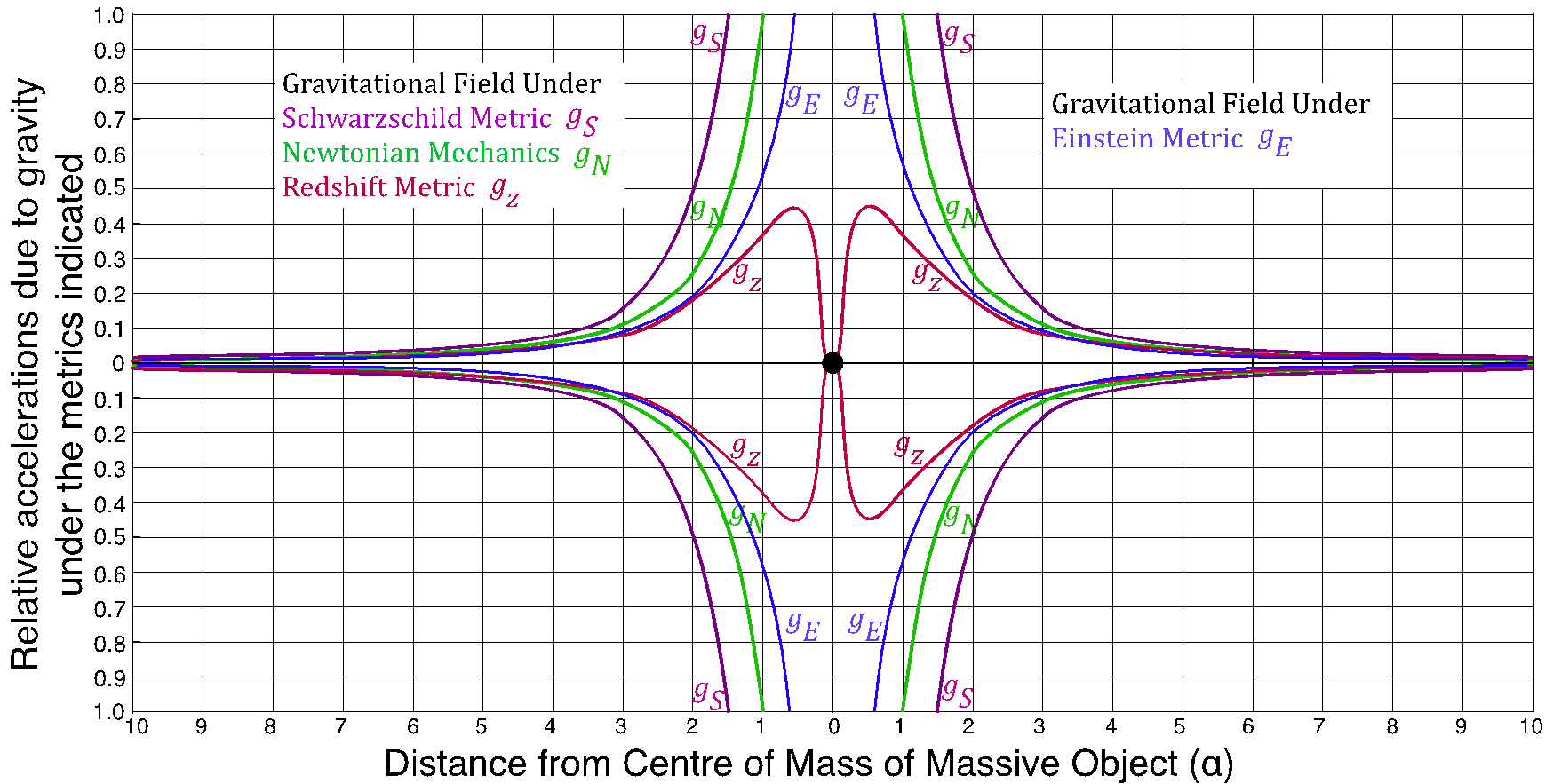
The gravitation field strengths under the Schwarzschild metric, gS, Newtonian gravity, gN, the exact solution to Einstein’s field equations, gE, and the exact solutions to the redshift physics used by Einstein, gZ. Those curves give the solutions to the different gravity field equations.
10 Some Galaxy Properties. Among other features, chapter 10 shows why galaxies don't need dark matter to explain their rotation. Their rotation rates are as expected for the physical conditions that exist in galaxies. The equation used to predict dark matter does not apply to galaxy rotation. Explanations are given for some observations that are difficult to explain within our own galaxy.
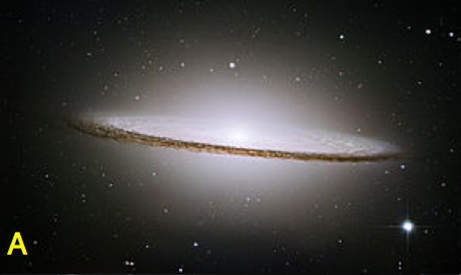
The Sombrero galaxy
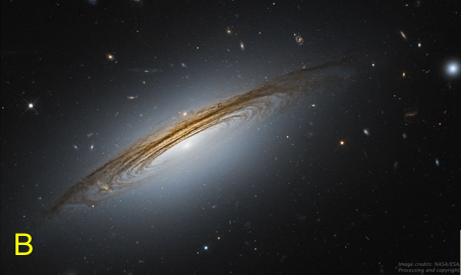
Galaxy UG 12591
When it comes to rotation, these two galaxies have interesting properties. Both rotate at over 500 km/sec, almost double the rotation speed of the Milky Way and average galaxies. Both have stars shining well away from their rotation axis, the dark gas and dust rim surrounding them. It would make interesting physics for cosmologists to explain how the extra dark matter required to make them rotate at double the average galaxy rotation speed and still allow the stars to get so far from the rotation plane. There is every Indication the answer is the same as the origins of the high energy gamma rays and the Fermi lobes captured by NASA’s Fermi Large Area Telescope, see below.
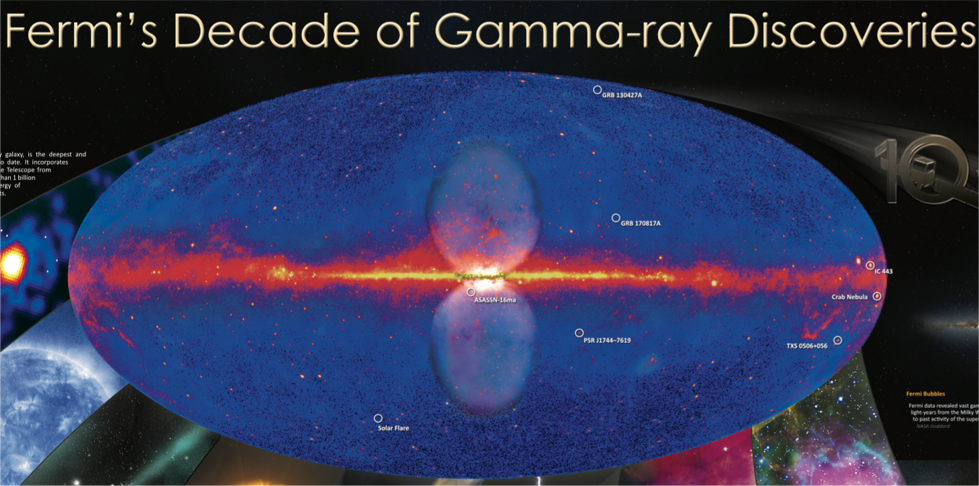
Chapter 11 Mechanics of the Universe describes its large-scale structure. It shows that, as determined by Einstein, and calculated in chapters 8 and 9, gravity gets weaker than inverse square as mass increases. Under that weaker gravity, an infinite steady-state universe will not collapse. It uses an alternative redshift mechanism that passes the Tolman test. It has a physical reason to occur.
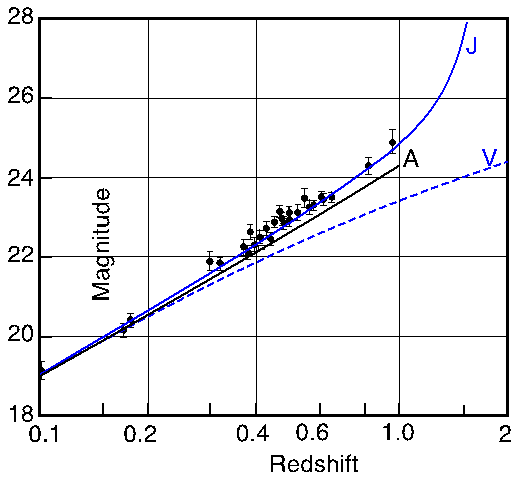
Measured SNe1a magnitudes at the indicated redshifts. Curve A shows the expected SNe1a magnitudes for the universe expanding at its critical rate. The experimental points above it were used to indicate the high redshift SNe1a were further away and therefore that the universe’s expansion was accelerating. Curve J shows the expected SNe1a magnitudes at different distances in an infinite steady state universe.The universe isn’t even expanding, let alone expanding at an accelerating rate.
The alternative redshift mechanism predicts the same redshift versus distance relationship as measured at redshift, z < ≈ 0.4. At high redshifts, z > 1, it predicts much larger distances. Those larger distances give the space needed for NASA’s Hubble Ultra Deep Field image to see all the galaxies it, and the James Webb telescope, have detected. imaged.
There is no need for either dark energy or dark matter to explain astronomer’s observations. The approximate distribution of mass throughout the universe is shown below. Although only small by mass, cosmological neutrinos are by far the universe’s most numerous particles.
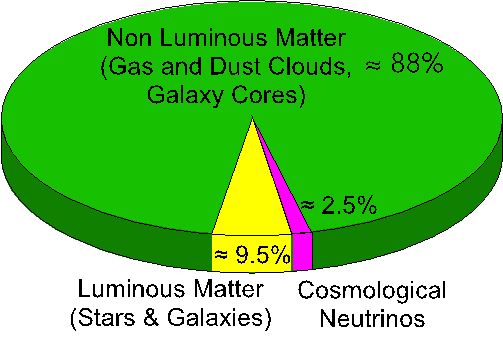
Chapter 12 Summary. Summarizes how this study started out with empty space and photons and finished with a brief introduction to the properties of the whole universe and its basic building blocks. Photon properties control all stages of the universe. When they travel in a straight line, they are energy. When they make two revolutions within their wavelength, they are particles with mass. That is the physical origin of E = mc2. It is also the origins of the special relativity corrections with increasing speed. No, it is not standard model. Yes, its predictions match observation and experiment. Everything in the universe is made from just one substance, namely photons. Interchange, emission and absorption involve rearranging just one material. That material generates gravity. THE COMMON SENSE UNIVERSE is much simpler to understand and more accurately predicts observations than the standard models. Don't waste time trying to patch up failing theories. Use common sense and go straight to "THE COMMON SENSE UNIVERSE" to work out what is really happening in your field of interest. MORE DETAILS CAN BE FOUND IN THE BOOKS SHOWN BELOW THE SIMPLE UNIVERSE
With 20,000 words and 3 dozen illustrations THE SIMPLE UNIVERSE gives a summary of how the universe works at different levels. It is aimed at an audience that knows about atoms, light and gravity to high school level. It is ideal for those who want to know how the universe works, without the complexities of why!
Learn a little about how the structure of electrons, protons and neutrons gives them their properties and lets them form nuclei and atoms
Knowing why dark matter and dark energy do not exist, makes it much easier to understand THE SIMPLE UNIVERSE
Available in Amazon eBook.
https://www.amazon.com/dp/B0C9N1MBB1THE COMMON SENSE UNIVERSE
The Common Sense Universe has 155,000 words and hundreds of illustrations, equations, and references. It gives all the information needed to understand the universe from its smallest sub-atomic particles to its large-scale structure. Both the physics and mathematics are about mid-undergraduate university level. They are all that are needed to give readers a more advanced level of understanding than those used by "experts" in many fields. It is common sense supported by the necessary mathematics at the simplest level needed without losing technical accuracy.
Readers will get more useful information about the structures and properties of sub-atomic, nuclear and elementary particles than from years of subscriptions to dedicated Journals. The same holds true of those who want to Einstein's relativity theories, the properties of galaxies and large scale structure of the universe. It is the original publication of the physical origins of gravity. An absolute must for those working in cosmology and galaxy properties
It is a must for those with a career in advanced level physics, or who want to know advanced level physical principles. The simplicity and accuracy of the presented information may make many readers seriously question whether the "experts" really understand what they are doing. Many could be excused for considering they have made their topics unnecessarily complicated using mathematics they don't understand.
As for the "experts", how could over 100 years pass by with the "best and brightest" not understanding Einstein's simple mathematics, or Newton's simple physics? That they could not understand them is evident from their insistence that black holes exist and that Einstein's field equations predict that gravity is stronger than inverse square. Simple maths, common sense and Newtonian gravity clearly show gravity must be weaker than inverse square for Mercury's anomalous orbit to precess. That can only occur when gravity is weaker than inverse square. Einstein predicted it when he calculated its anomalous precession.
The Common Sense Universe takes the complexity out of advanced physics. It restores the common sense that existed under Newtonian mechanics without losing technical accuracy or scientific integrity. The sooner the experts read it, the earlier they can add to this work or use the results to advance their studies. It gives dozens of experimentally testable predictions that can be verified.
Available in Hard Cover version.
https://www.amazon.com/dp/0645412554/
Copy address and paste in search engine.
The information within them flows continuously from the smallest sub-atomic particle to the universe's large scale structure.
Along the way they explain quantum mechanics and Einstein's relativity theories, including gravity, through classical, common sense ideas. All in 3 space dimensions and time, using only known physical properties and constants.
It explains many unknowns from standard models and makes many experimentally testable predictions. What more do you want?